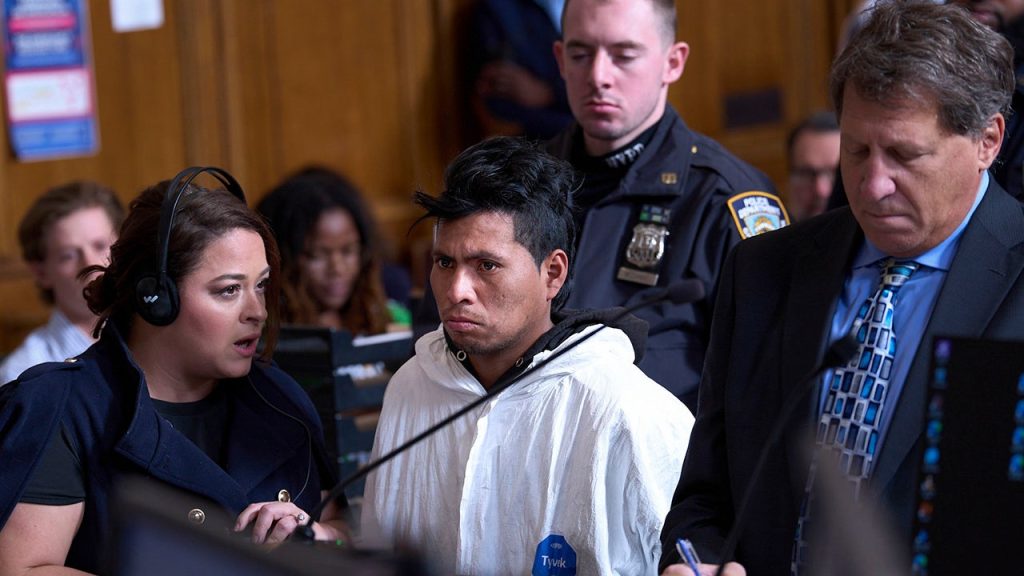The tragic death of an unidentified woman on a New York City subway car, allegedly at the hands of a previously deported illegal immigrant, has ignited a firestorm of criticism and sparked debate about bystander intervention and the safety of the city’s transit system. The horrific incident, captured on surveillance video, shows the suspect, identified as Sebastian Zapeta, approaching the seemingly sleeping woman on a stationary F train and setting her ablaze. The sheer brutality of the crime has been compounded by reports that several bystanders, including possibly police officers, witnessed the event unfold without intervening directly to assist the victim. This apparent inaction has drawn comparisons to the “Daniel Penny effect,” a perceived reluctance to intervene in emergencies stemming from the legal ramifications faced by Daniel Penny after restraining Jordan Neely on a subway car.
The “Daniel Penny effect,” as coined by Guardian Angels founder Curtis Sliwa, posits that the highly publicized case of Daniel Penny, a Marine veteran who restrained Jordan Neely on a subway car, has created a chilling effect on bystander intervention. Penny was ultimately acquitted of all charges related to Neely’s death, but the protracted legal proceedings and intense public scrutiny are believed to have instilled a fear of legal repercussions among potential Good Samaritans. Sliwa argues that this fear contributed to the lack of immediate intervention in the burning woman’s case, with witnesses reportedly filming the incident rather than actively assisting the victim or cooperating with law enforcement. This reluctance to get involved, Sliwa contends, stems from a desire to avoid being “dragged into court, prosecuted, and then have your life turned upside down.”
Adding another layer of complexity to the tragedy are reports surrounding the alleged perpetrator, Sebastian Zapeta. Identified as a previously deported Guatemalan migrant, Zapeta’s history has raised questions about immigration enforcement and the potential impact of sanctuary city policies. He was reportedly deported by the Trump administration in 2018 after illegally crossing into Arizona, but subsequently re-entered the United States. Further details about Zapeta’s background paint a disturbing picture of substance abuse and erratic behavior. A former shelter resident claims Zapeta regularly used K2, a synthetic marijuana known for its unpredictable effects, and often exhibited volatile behavior after consuming drugs and alcohol. This information, while not excusing his alleged actions, provides context for understanding the potential motivations behind the horrific crime.
The incident has also fueled criticism of New York Governor Kathy Hochul, who just hours before the incident touted the improved safety of the subway system under her administration. Hochul’s claims of decreased crime on the subway were immediately contrasted with the brutal reality of the burning woman, sparking outrage and accusations of insensitivity on social media. The juxtaposition of Hochul’s optimistic pronouncements with the horrific event underscores the disconnect between official narratives and the lived experiences of many New Yorkers, particularly those who rely on the subway system. The timing of the incident, occurring on the very same day as Hochul’s celebratory statements, served to amplify the public’s frustration and skepticism regarding the governor’s claims about subway safety.
While the alleged inaction of bystanders has drawn significant attention, differing perspectives have emerged regarding the response of law enforcement. Curtis Sliwa criticized the police response, alleging a lack of expediency in their arrival and intervention. However, retired NYPD inspector Paul Mauro offered a counter-narrative, citing a source who claimed an officer was actively searching for a fire extinguisher and that police were responding as quickly as possible under the circumstances. This conflicting information highlights the challenges in accurately assessing real-time responses to emergencies, especially in complex environments like the subway system. It also underscores the importance of considering multiple accounts before drawing definitive conclusions about the effectiveness of emergency response efforts.
The tragic death of the unidentified woman has reignited anxieties surrounding subway safety and the challenges of addressing crime and homelessness in a major metropolitan area. The incident serves as a grim reminder of the vulnerabilities faced by marginalized populations, particularly those experiencing homelessness, and raises questions about the adequacy of support systems and resources for this vulnerable group. The ongoing investigation will likely shed more light on the circumstances surrounding the attack and the responses of both bystanders and law enforcement. However, the broader societal implications of the “Daniel Penny effect” and its potential impact on bystander intervention will undoubtedly continue to be debated and analyzed in the aftermath of this horrific event. The search for solutions to address the complex issues of subway safety, homelessness, and mental health will remain a critical challenge for New York City in the months and years to come.










